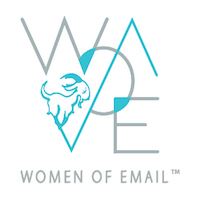Happy Thanksgiving
- laura
- November 21, 2017
- Uncategorized
 A little over a year ago, Kristin Bond posted an article (reprinted here) looking at the diversity of speakers at marketing conferences. As with many articles pointing out gender issues in technology there was quite a bit of discussion about it on a related mailing list. Some of the comments were supportive and open to the idea that gender diversity is an overall good. Some of the comments, while well meaning, indicated the commenters didn’t understand some of the more systemic issues that result in conferences with speaker lists that consist primarily of white men.
A little over a year ago, Kristin Bond posted an article (reprinted here) looking at the diversity of speakers at marketing conferences. As with many articles pointing out gender issues in technology there was quite a bit of discussion about it on a related mailing list. Some of the comments were supportive and open to the idea that gender diversity is an overall good. Some of the comments, while well meaning, indicated the commenters didn’t understand some of the more systemic issues that result in conferences with speaker lists that consist primarily of white men.
Kristin, I, Jen Capstraw and April Mullen started talking privately about the issue. What I discovered during those conversations is that I wasn’t alone in how I felt about some spaces. Being a woman in tech I expect to feel left out in many places. When I go to a conference, or I participate in an online space or I meet up with colleagues in social situations, I expect that someone will say something sexist. As a woman I regularly feel like an outsider. What I didn’t realize is other women in those same spaces felt the same way. By not saying something I was missing an opportunity to find a supportive atmosphere with other women who also thought spaces were unfriendly or toxic to women.
But we didn’t just complain; we decided to take action. What would happen if we created a space to help conferences find women speakers? What would happen if we set up a framework for women to find mentors? What did we have to lose by trying? Thus, Women of Email™ was formed.
It’s been a wild week here in the US. I have to admit, the current political climate is affecting my ability to blog about email. I’ve always said email is not life or death. And how can I focus on the minutia of deliverability when things are in such turmoil and uncertainty? There are many things I want to write about, including some resources for those of us who are struggling with the current administration and changes in the US. What we can do. What we must do. It just takes work and focus I don’t have right now.